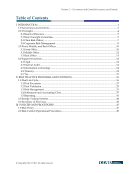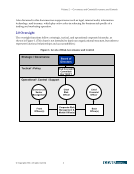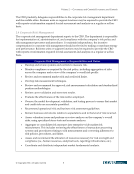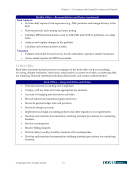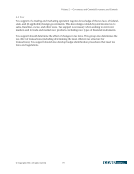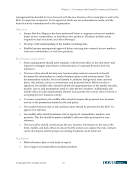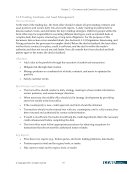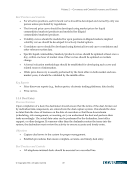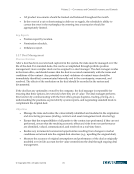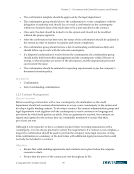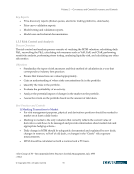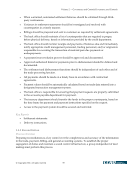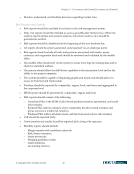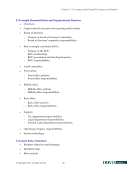Volume 2 — Governance and ControlsGovernance and Controls © Copyright 2002, All rights reserved 42 • Monitor, understand, and facilitate decisions regarding market risks. Best Practices and Controls • Risk reports should be available in real time in the risk management system. • Daily risk reports should be initiated as soon as possible after market close. Other risk analysis reports (stress-test scenario analysis, risk return metrics, etc.) should be generated as needed. • Risk reports should be distributed at the beginning of the next business day. • All reports should be system-generated and presented via an employee portal. • Risk reports should include all risks and positions associated with trades, assets, contracts, and origination deals and should be reviewed and validated by the middle office. • The middle office should rely on the system to create error logs for missing data and to check for statistical outliers. • The process should allow for drill-down capability to the transaction level and for the ability to document comments. • The system should be capable of displaying graphs and trends and should allow for access to historical and market data. • Positions should be reported by commodity, region, book, and tenor and aggregated to the corporate level. • MTM reports should be presented by commodity, region, and book. • P&L reports should consist of the following: − Unrealized P&L is the MTM of all forward positions (market, operational, and credit risks remain). − Realized P&L reflects contracts where commodity has flowed and volumes and prices are known (credit risk remains). − Finalized P&L reflects all deals where cash has been received (no risk remains). • VaR should be reported daily. • Limits (market and credit) should be reported daily along with exposure. • Monthly reports should include: − Margin reports with confidence intervals. − Risk/return measures. − Stress-test results. − Hedging guideline results. − Limit violations. − Accounting reserves.
Purchased by unknown, nofirst nolast From: CCRO Library (library.ccro.org)


